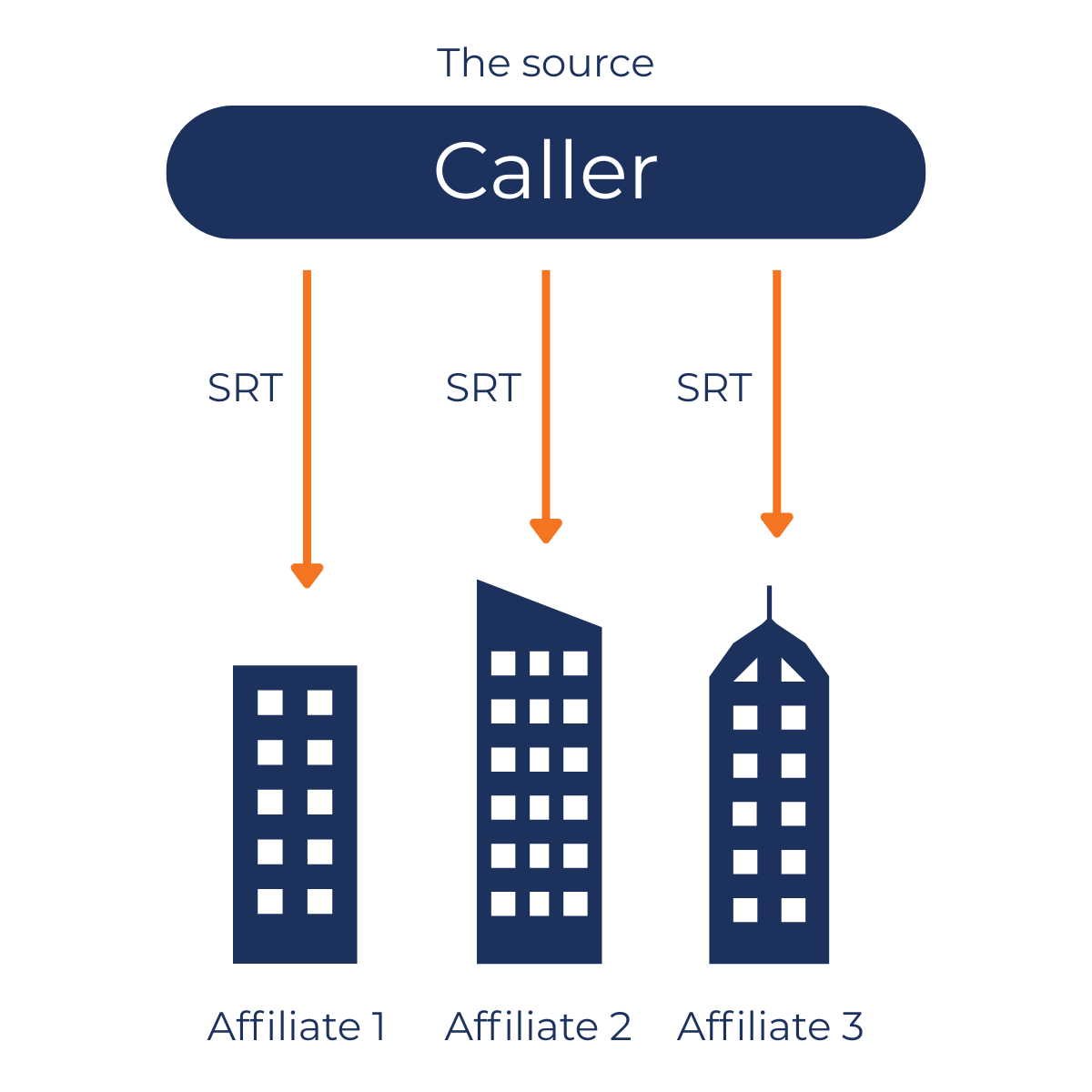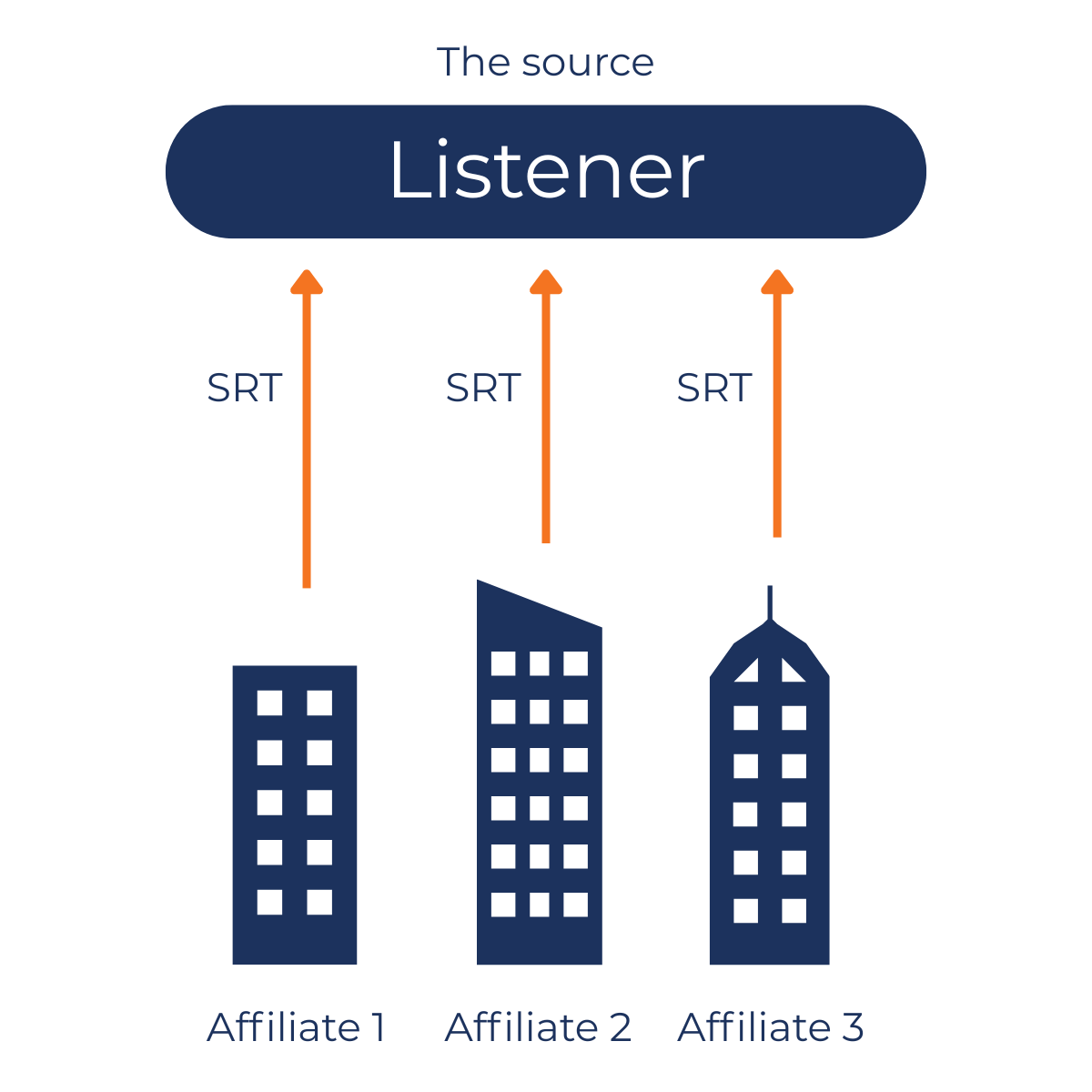One stream, many destinations: Why multi-taker SRT emission is the new standard in IP contribution
Blog & white papers
01 July 2025

In today’s broadcast and live production landscape, the expectation is no longer to deliver one stream to one destination.
Whether you’re covering sports, news, or live events, your content must now travel to a diverse mix of endpoints — affiliates, OTT platforms, cloud encoders, and regional playout hubs — all at once, and in real time.
This demand has turned multi-taker SRT emission into a cornerstone capability for any IP contribution gateway.
At BBright, we see this not as a burden, but as an opportunity: an opportunity to simplify distribution while increasing control, scalability, and reliability.
The Growing Demand for Multi-Taker Distribution
Use cases driving this need include:
- Sports rightsholders delivering UHD feeds to international broadcasters.
- News pools distributing simultaneous live feeds to regional affiliates.
- Live events sending the same stream to CDN origin points, playout servers, and backup facilities.
- Remote production hubs ingesting the same stream into multiple toolchains.
Each scenario demands:
- Low-latency, secure delivery
- Per-taker connection management
- Scalable emission without duplicating infrastructure
And increasingly, these workflows rely on SRT (Secure Reliable Transport).
Caller vs Listener: What’s the Difference?
SRT establishes connections between endpoints using Caller and Listener roles:
- Caller: Actively initiates the connection to a remote endpoint.
- Listener: Waits for an incoming connection request on a specified port.
In any SRT session, one side must be a Caller, and the other a Listener.
Scenario: Emitting SRT to Multiple Takers
Let’s say you’re a broadcaster using BBright IP-Gateway or Encoder to deliver your stream to several affiliates across different regions. Each affiliate is ready to receive your SRT stream. You have two options for setting up the connections:
Approach 1: You (the source) act as Caller
You configure your system to initiate an outbound SRT connection to each affiliate.

✅ Pros:
- Works easily behind firewalls: The receiving side (Listener) just opens a port.
- Simple for the receiver: No configuration changes needed on their end beyond opening the port.
- Centralized control: You manage and monitor each connection from your origin.
❌ Cons:
- Scalability: For multiple takers, your system must handle several outgoing connections.
- Bandwidth duplication: Each outgoing SRT stream uses a separate bandwidth path (e.g., 5 takers = 5x bitrate).
- Latency variability: Different routes may introduce slight delay differences across takers.
Approach 2: You (the source) act as Listener
You keep your port open, and each affiliate connects to you as a Caller.

✅ Pros:
- Scalable architecture: New takers can connect as needed without configuration on your end.
- Bandwidth offload (in some setups): When paired with CDN or cloud multicasting tools, this can reduce origin bandwidth needs.
- Redundancy-friendly: Easier for affiliates to set up automatic fallback via multiple Callers.
❌ Cons:
- Requires public IP & port management: Your firewall must allow inbound SRT connections.
- Security: Exposes your receiver port — needs ACLs or token-based validation to prevent abuse.
- Less control: You don’t “push” streams — you must wait for takers to initiate.
Which Model is Best?
It depends on your infrastructure and operational model:
- If you’re using BBright IP-Gateway in a cloud environment (e.g., AWS), acting as a Listener can be highly scalable — each affiliate dials in securely.
- If you’re operating on-prem behind a NAT or firewall, and your affiliates are known in advance, acting as Caller gives you full control and better firewall compatibility.
BBright’s Flexible SRT Handling
BBright’s IP-Gateway, encoder and decoder products are built to manage both Caller and Listener modes — with multiple simultaneous outputs (for IP-Gateway & Encoder), meaning you can emit one stream to many takers using either approach, thanks to BBright key features:
✅ Multiple parallel SRT outputs per incoming stream
✅ Each output can be Caller or Listener
✅ Individual configuration per destination (passphrase…)
✅ Integrated per-taker monitoring.
✅ REST API and GUI for fast onboarding or taker switching during live events
Bonus Tip: Use BBright as a Repeater Node
In some architectures, BBright IP-Gateway can act as a midstream repeater: it receives a primary SRT stream, then redistributes it to many takers, converting protocols or modifying settings as needed (e.g., SRT to RIST, or adding metadata). This is ideal for global multi-affiliate distribution or event contribution.
Conclusion: Scale Smarter with SRT and BBright
Whether you’re acting as Caller or Listener, SRT gives you the tools to deliver secure, resilient video over IP. But how you scale to multiple takers — and how you monitor those streams — is where BBright makes a difference.
With native support for multi-output SRT, intuitive UI for operators, and full real-time monitoring, BBright ensures your IP contribution and distribution workflows are robust, flexible, and future-ready.
Need help choosing the right setup for your project? Our team can help design a topology that balances performance, scalability, and security — just get in touch.